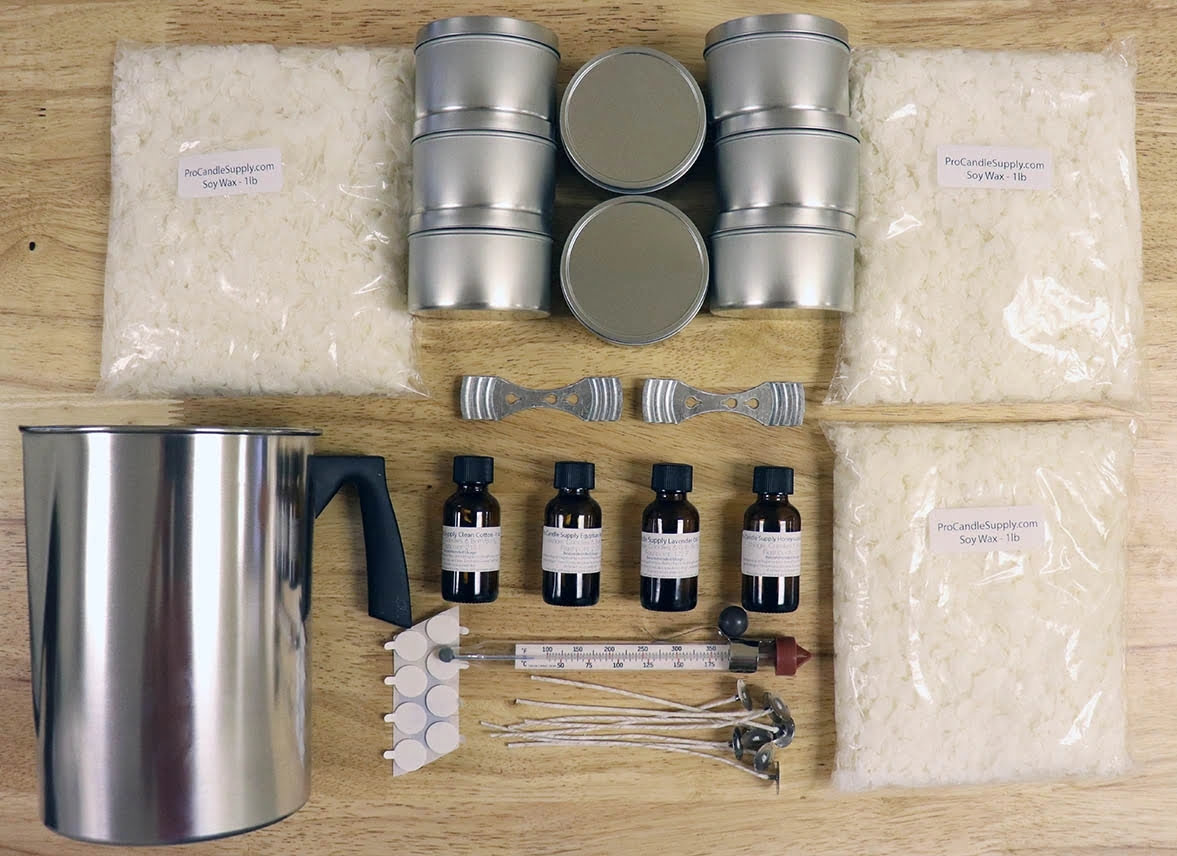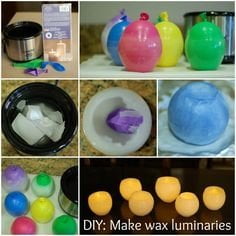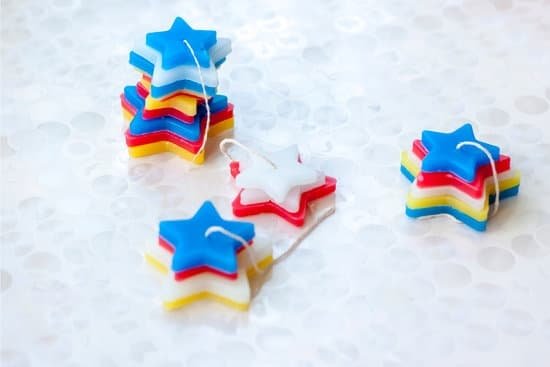Candle making is a fun, easy and affordable hobby. Not only do you get to create beautiful things, but you can also customize the scent and color of your candles to match your mood or the season. One of the best things about candle making is that you don’t need a lot of supplies or equipment to get started. All you really need is a wax, a wick, a heat source and a mold.
Molds are a key component of candle making, and you have a few different options when it comes to choosing the right mold for your project. If you’re making votives or tea lights, a small mold like a shot glass or a Dixie cup is a good option. For larger candles, like pillars or jars, you’ll need a mold that’s at least twice the size of the finished candle.
There are a few different types of candle molds to choose from, but the most popular type is the silicone mold. Silicone molds are durable, flexible and heat resistant, making them the perfect choice for candle making. They’re also easy to use – just pour your wax into the mold, insert the wick, and melt the wax in a heat source. When the wax is melted, use a spoon or a utensil to stir the wax and make sure that the wick is in the center of the mold. Then, let the wax cool and harden.
If you’re looking for a more traditional candle mold, there are a few different materials to choose from. Metal molds are a popular choice because they’re durable and easy to clean. However, they can be a little bit difficult to use because the wax can stick to the sides of the mold. Glass molds are a good option if you’re looking for a reusable mold, and they’re also easy to clean. However, they can be a little bit fragile, so you need to be careful when using them.
Wooden molds are a good option if you’re looking for a rustic or natural look, and they’re also easy to clean. However, they can be a little bit difficult to use because the wax can stick to the sides of the mold. If you’re looking for a mold made from a natural material, bamboo molds are a good option. Bamboo molds are durable and heat resistant, and they’re also easy to clean.
No matter which type of mold you choose, make sure that you select a mold that is the right size for your project. If the mold is too small, the candle will be difficult to remove. If the mold is too large, the candle will be too thin and may not burn properly.
Now that you know a little bit more about candle molds, it’s time to get started on your own project!
Diy Wax Melt Kit
Are you looking for an easy and affordable way to make your own wax melts? If so, you’ll love our diy wax melt kit! Our kit includes all of the supplies you need to make your own wax melts, including:
-Wax
-Fragrance oil
-Wax melter
-Instructions
Making your own wax melts is a great way to save money and customize your scent preferences. Plus, it’s a fun activity to do with friends or family!
To make your wax melts, you’ll first need to melt the wax. You can do this using a wax melter. Once the wax is melted, you can add your desired fragrance oil. Be sure to use only fragrance oils that are specifically made for use in wax melts, as other oils may not be safe to use.
Once the fragrance oil is added, you can pour the wax into molds. We recommend using silicone molds, as they are easy to use and clean. You can find silicone molds online or at your local craft store.
Once the wax has hardened, you can remove it from the mold and use it in your wax melt warmer. Enjoy!
How To Make Candles From Crayons
Candles are a popular item to make at home because they are relatively simple to make, and they can be quite beautiful. You can make candles from a variety of materials, but one of the most popular types of candles to make is crayon candles.
Crayon candles are easy to make and they are a great way to use up old crayons that you no longer need. To make a crayon candle, you will need:
-Crayons
-Wax
-A pot
-A thermometer
-A mold
-Candle wicks
The first step is to break the crayons into small pieces. You can do this by hand, or you can use a food processor.
Next, heat the wax in a pot over low heat. Once the wax has melted, add the crayon pieces and stir until they are completely melted.
Once the wax and crayons are melted, remove the pot from the heat and let it cool for a few minutes. Then, add the candle wicks and pour the wax into the mold.
Let the wax cool and harden, then remove the candles from the mold.
Crayon candles are a fun and easy way to make candles at home, and they are a great way to use up old crayons.
How To Make Soy Candles Smell Stronger
Soy candles are a great way to enjoy the benefits of aromatherapy without having to light a whole bunch of incense. Not only do they give off a lovely scent, but they also produce a soothing ambiance. However, sometimes soy candles can seem a bit weak, especially when compared to other types of candles. If you want your soy candles to smell stronger, here are a few tips to help you out.
One of the simplest ways to make your soy candles smell stronger is to use a higher concentration of fragrance oil. Most soy candle fragrances are available in different concentrations, so you can experiment until you find the right balance for your needs.
Another way to make your soy candles smell stronger is to add some essential oils to the mix. Essential oils are a great way to enhance the scent of your candles, and they also have a range of therapeutic benefits.
Finally, you can also increase the scent of your soy candles by using a different type of wax. Some types of wax, such as beeswax, have a stronger scent than soy wax. You can also try using a blend of different types of waxes to create a more intense scent.
By using these tips, you can make your soy candles smell stronger and enjoy the benefits of aromatherapy even more.
Where Does The Candle Wax Go
?
Candles are a classic way to add ambiance to any room. They come in a variety of shapes and sizes, and each has its own unique scent. But what happens to the candle wax when it’s burned?
Candle wax is made of two main components: stearic acid and palmitic acid. These fatty acids are derived from plant and animal sources, and they react with each other when heated to produce candle wax.
The heat from the flame melts the wax in the wick, and the melted wax is drawn up the wick. The heat from the flame vaporizes the liquid wax in the wick, and the vaporized wax is drawn up into the flame.
The heat from the flame vaporizes the wax in the wick, and the vaporized wax is drawn up into the flame. The vaporized wax then reacts with the oxygen in the air to produce heat, light, water vapor, and carbon dioxide.
The heat from the flame vaporizes the wax in the wick, and the vaporized wax is drawn up into the flame. The vaporized wax then reacts with the oxygen in the air to produce heat, light, water vapor, and carbon dioxide. The heat from the flame vaporizes the wax in the wick, and the vaporized wax is drawn up into the flame. The vaporized wax then reacts with the oxygen in the air to produce heat, light, water vapor, and carbon dioxide.
The heat from the flame vaporizes the wax in the wick, and the vaporized wax is drawn up into the flame. The vaporized wax then reacts with the oxygen in the air to produce heat, light, water vapor, and carbon dioxide.
The heat from the flame vaporizes the wax in the wick, and the vaporized wax is drawn up into the flame. The vaporized wax then reacts with the oxygen in the air to produce heat, light, water vapor, and carbon dioxide.
The heat from the flame vaporizes the wax in the wick, and the vaporized wax is drawn up into the flame. The vaporized wax then reacts with the oxygen in the air to produce heat, light, water vapor, and carbon dioxide.
The heat from the flame vaporizes the wax in the wick, and the vaporized wax is drawn up into the flame. The vaporized wax then reacts with the oxygen in the air to produce heat, light, water vapor, and carbon dioxide.
The heat from the flame vaporizes the wax in the wick, and the vaporized wax is drawn up into the flame. The vaporized wax then reacts with the oxygen in the air to produce heat, light, water vapor, and carbon dioxide.
The heat from the flame vaporizes the wax in the wick, and the vaporized wax is drawn up into the flame. The vaporized wax then reacts with the oxygen in the air to produce heat, light, water vapor, and carbon dioxide.
The heat from the flame vaporizes the wax in the wick, and the vaporized wax is drawn up into the flame. The vaporized wax then reacts with the oxygen in the air to produce heat, light, water vapor, and carbon dioxide.
The heat from the flame vaporizes the wax in the wick, and the vaporized wax is drawn up into the flame. The vaporized wax then reacts with the oxygen in the air to produce heat, light, water vapor, and carbon dioxide.
The heat from the flame vaporizes the wax in the wick, and the vaporized wax is drawn up into the flame. The vaporized wax then reacts with the oxygen in the air to produce heat, light, water vapor, and carbon dioxide.
The heat from the flame vaporizes the wax in the wick, and the vaporized wax is drawn up into the flame. The vaporized wax then reacts with the oxygen in the air to produce heat, light, water vapor, and carbon dioxide.
The heat from the flame vaporizes the wax in the wick, and the vaporized wax is drawn up into the flame. The vaporized wax then reacts with the oxygen in the air to produce heat, light, water vapor, and carbon dioxide.
The heat from the flame vaporizes the wax in the wick, and the vaporized wax is drawn up into the flame. The vaporized wax then reacts with the oxygen in the air to produce heat, light, water vapor, and carbon dioxide.
The heat from the flame vaporizes the wax in the wick, and the vaporized wax is drawn up into the flame. The vaporized wax then reacts with the oxygen in the air to produce heat, light, water vapor, and carbon dioxide.
The heat from the flame vaporizes the wax in the wick, and the vaporized wax is drawn up into the flame. The vaporized wax then reacts with the oxygen in the air to produce heat, light, water vapor, and carbon dioxide.
The heat from the flame vaporizes the wax in the wick, and the vaporized wax is drawn up into the flame. The vaporized wax then reacts with the oxygen in the air to produce heat, light, water vapor, and carbon dioxide.
The heat from the flame vaporizes the wax in the wick, and the vaporized wax is drawn up into the flame. The vaporized wax then reacts with the oxygen in the air to produce heat, light, water vapor, and carbon dioxide.
The heat from the flame vaporizes the wax in the wick, and the vaporized wax is drawn up into the flame. The vaporized wax then reacts with the oxygen in the air to produce heat, light, water vapor, and carbon dioxide.
The heat from the flame vaporizes the wax in the wick, and the vaporized wax is drawn up into the flame. The vaporized wax then reacts with the oxygen in the air to produce heat, light, water vapor, and carbon dioxide.
The heat from the flame vaporizes the wax in the wick, and the vaporized wax is drawn up into the flame. The vaporized wax then reacts with the oxygen in the air to produce heat, light, water vapor, and carbon dioxide.
The heat from the flame vaporizes the wax in the wick, and the vaporized wax is drawn up into the flame. The vaporized wax then reacts with the oxygen in the air to produce heat, light, water vapor, and carbon dioxide.
The heat from the flame vaporizes the wax in the wick, and the vaporized wax is drawn up into the flame. The vaporized wax then reacts with the oxygen in the air to produce heat, light, water vapor, and carbon dioxide.
The heat from the flame vaporizes the wax in the wick, and the vaporized wax is drawn up into the flame. The vaporized wax then reacts with the oxygen in the air to produce heat, light, water vapor, and carbon dioxide.
The heat from the flame vaporizes the wax in the wick, and the vaporized wax is drawn up into the flame. The vaporized wax then reacts with the oxygen in the air to produce heat, light, water vapor, and carbon dioxide.
The heat from the flame vaporizes the wax in the wick, and the vaporized wax is drawn up into the flame. The vaporized wax then reacts with the oxygen in the air to produce heat, light, water vapor, and carbon dioxide.
The heat from the flame vaporizes the wax in the wick, and the vaporized wax is drawn up into the flame. The vaporized wax then reacts with the oxygen in the air to produce heat, light, water vapor, and carbon dioxide.
The heat from the flame vaporizes the wax in the wick, and the vaporized wax is drawn up into the flame. The vaporized wax then reacts with the oxygen in the air to produce heat, light, water vapor, and carbon dioxide.
The heat from the flame vaporizes the wax in the wick, and the vaporized wax is drawn up into the flame. The vaporized wax then reacts with the oxygen in the air to produce heat, light, water vapor, and carbon dioxide.
The heat from the flame vaporizes the wax in the wick, and the vaporized wax is drawn up into the flame. The vaporized wax then reacts with the oxygen in the air to produce heat, light, water vapor, and carbon dioxide.
The heat from the flame vaporizes the wax in the wick, and the vaporized wax is drawn up into the flame. The vaporized wax then reacts with the oxygen in the air to produce heat, light, water vapor, and carbon dioxide.
The heat from the flame vaporizes the wax in the wick, and the vaporized wax is drawn up into the flame. The vaporized wax then reacts with the oxygen in the air to produce heat, light, water vapor, and carbon dioxide.
The heat from the flame

Welcome to my candle making blog! In this blog, I will be sharing my tips and tricks for making candles. I will also be sharing some of my favorite recipes.





